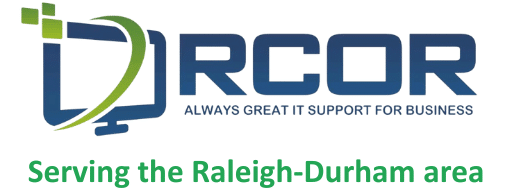Understanding the difference between staff augmentation and managed service will help owner/managers of the small businesses in Raleigh and Durham, North Carolina decide how best to meet your goal with respect to increasing your organizational capacity within your IT capabilities.
This page will describe both concepts, look at the costs and benefits, and assist you, as the reader, to clarify if staff augmentation is the right fit for you to gain flexibility with respect to resources, or, if a managed services contract is a better fit with respect to getting a comprehensive solution that fits all your business operations.
Understanding Staff Augmentation
Staff augmentation is an ideal, and flexible approach that lets the organization fill skills gaps caused in part by existing team members or to provide additional people and for a defined duration.
The staff augmentation approach aligns cost and time thinking for small organizations, if the work requested supports a defined time with a skillset for the current work effort and project. The problems of staffing will change from recruiting one employee for the project to staff augmentation direct labor management.
In a simple form, staff augmentation offers an organization a mechanism for rendering a skills gap efficiently, time bound, or proactively starting a project with minimal or no upfront buy-in requirement, provided this is managed efficiently.
Staff augmentation can also provide some access to specialists in aspects of new emerging technologies, are budget friendly, allow the organization the resource level of ability to up or down staff and avoid the need to hire into a new role, which can be beneficial for a very small organization where the owner is making the organizational decisions with employee engagement to manage the projects.
When to Consider Staff Augmentation
There are reasons that you will want to explore staff augmentation:
- Temporary spikes in workflow: Seasonal demand, a new client requirement, or new employees can all augment the staff for the organization. The need for specialized expertise: If your project requires specialized skills, like software development, cybersecurity, or cloud migration, you can hire a specialized expert for the duration of the project.
- Time-sensitive project: Augmented professionals typically have the background to ‘hit the ground running’ when necessary. Thus, the project will keep moving forward without utilizing time or pausing to explore the project timeline of extension.
- Cost effective: You are only investing in specialized expertise as you need it, rather than having money tied up in longer term payroll liabilities that hinder your ability to allocate capital for maximizing growth opportunities.
- Staff augmentation would be best used by organizations that have a robust internal staff but need lower cost support on a specialized or short-term project.
Entering into Managed Services
Managed Services are designed for organizations that are looking to outsource IT operations completely.
Organizations that hand-off IT operations will have a Managed Service Provider (MSP) taking care of all IT related functions, while allowing the organization to focus on core operations for the efficiencies of cost, time-savings, security, and availability of managed services.
Managed services would typically include:
- Continuous monitoring and maintenance of the network
- Data backup and disaster recovery
- Cybersecurity compliance and cybersecurity management
- 24 hours a day, 7 days a week, helpdesk for employees
For small organizations, they will have predictable IT costs with security and peace of mind knowing that the hardware and software is working properly and managed by a team of experts.
Benefits of Diving Into Managed Services
There are several benefits to jumping into managed services:
- Cost-predictable monthly expense: use a fixed monthly expense in place of unpredictable IT expense, while using this cost as a steady business operating cost.
- Access to expertise: small organizations have enterprise-level support without the expense of hiring their own internal staff of IT professionals. Enhanced Security: Managed service providers (MSPs) offer consistent monitoring and the most up-to-date cybersecurity protections to protect sensitive data.
- Scalability: IT resources can grow or shrink along with the growth of the business.
- Operational Focus: Leadership and staff can focus on business objectives, while letting a trusted provider manage their IT needs.
Managed Services are very beneficial for organizations that seek consistent and proactive IT support, as well as wanting to delegate day-to-day technology management.
Staff Augmentation vs. Managed Services
While both staff augmentation and managed services address the same IT needs, staff augmentation is more limited in scope, and the two offerings will yield differing results.
Staff augmentation is provided on either a project, a limited term, and a need to get specialized skills quickly, without a commitment to the person long term.
Managed services are ongoing, comprehensive service offerings, that seek to develop a true partner for an organization and manage a business IT service effectively.
Which option do you prefer? Short-term flexibility, or long-term stability?
Costs and Benefits Comparison
To support any decision-making of staff augmentation vs. managed services, often the financial component comes into play first, or makes or breaks the decision. To be clear, costs matter, but sometimes the financial strategy and long-term IT goals drive the decision-making.
Staff augmentation is often a pay as you go offering so you often pay for the time’s and specialized skills you need. Therefore you will not incur our similar costs to employing a full time employee.
This may include all the costs associated with benefits, confidentiality training, taxes etc. It may be a good option for a short term project or period of time when you expect a spike in demand for help.
However, staff augmentation can be costly if someone shows you they can be a valuable resource and you may rely on them significantly with no limit on how far, for how long or on which projects might occur.
A successful business might also have to budget effectively to meet the increased demand if you are not using it while project tasks have been completed or new projects are waiting.
Managed services are priced as a monthly fee and cover a wide range of IT service needs. While an initial commitment to managed services for longer periods of time is more expensive than occasional staff augmentation, managed service pricing includes other ongoing components of monitoring, maintenance and support.
These components not only create stability and predictability in managed services, but over time savings may be realized by avoiding downtime, protecting against risks posed by cyber threats and ensuring business continuity.
The overall value of managed services versus staff augmentation should reflect total costs and an overall consideration for savings.
Making the Right Choice for Your Business
The decision to either use managed services for a fixed monthly fee or augment the internal staff of the organization is dependent on your organization’s current capabilities and specifically, its current position in business growth lifecycle.
If the business needs flexibility and specialized expertise but has a robust technical architecture, staff augmentation is a particularly effective and efficient path to take when investigating temporary or project-based support need.
This will allow the organization to utilize an external specialist as needed for a special project – at the organization’s pace and time to fulfill a particular assignment. Staff augmentation also allows for control of the process for the services provided to your customers while fulfilling operational and organizational goals of the organization.
If the organization is ready for more predictable environments and less tactical thinking as to day-to-day planning, then managed services would be an efficient model for servicing client’s different.
This is an effective model for an organization that does not have a large IT department or organization, needs assistance with a growing need for more security for the organization and assistance with protecting organizational data now and working towards more efficiency with managed services as the organization grows.
However, some organisations will use a hybrid model designed for some augmentation based on carrying out daily support, while also at times using a managed service provider to specialize in requests. Overall, use the right solution that fits your budget and strategic future needs; fits your organization tolerance for risk and timelines for service offerings.
Final Thoughts
Ultimately decisions based on a service management plan for staff augmentation or managed services are not simply tactical, but they are also strategic. Businesses can benefit from engaging staff augmentation based on a temporary need for transitional service during projects, or when the organization chooses the predictability of Managed Services and ongoing support and agility in managing the IT department. Engaging either option can have very positive outcomes in and of itself.
At RCOR, we support businesses with the first, second, third and decisions- develop options and the implementation process to fit your budget and operational goals. When it is the right time, we have subject matter experts in IT, Managed Services, and full-service capacity to service your business. Our options will support the most robust technology service that will serve you and support you.

